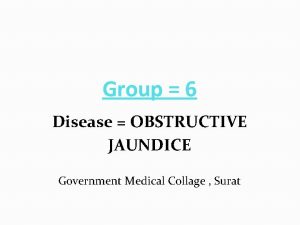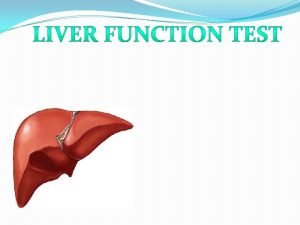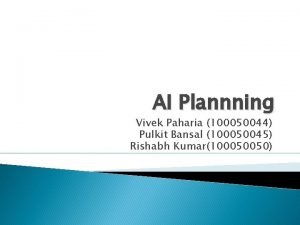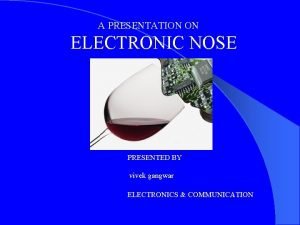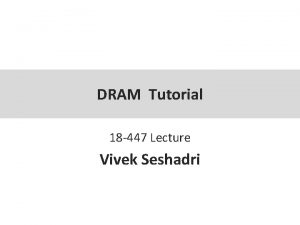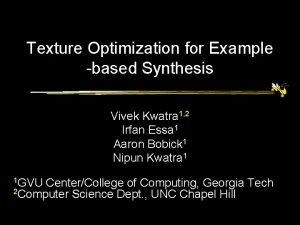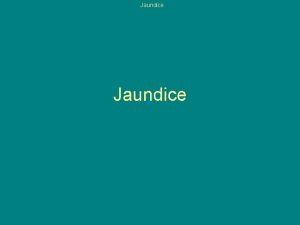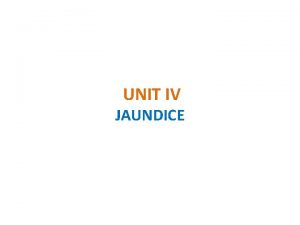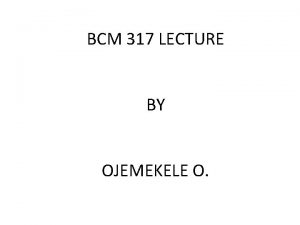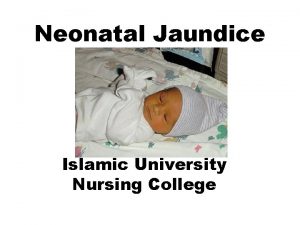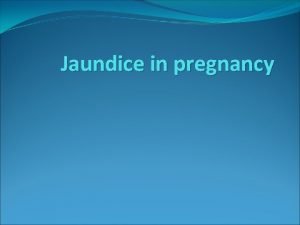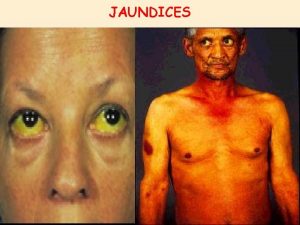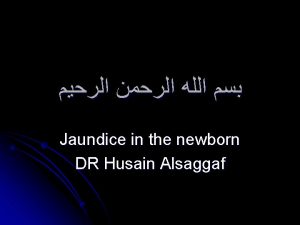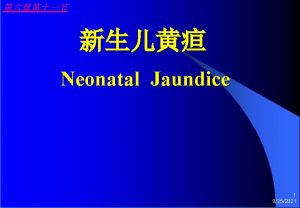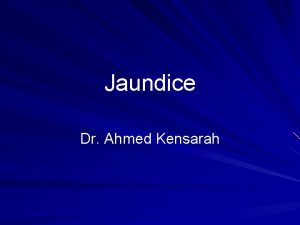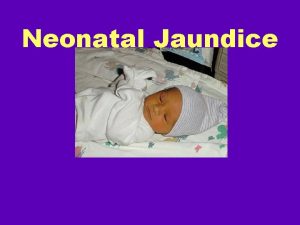Liver DisorderII Jaundice UNIT2 Dr Vivek Kr Singh














- Slides: 14

Liver Disorder-II (Jaundice) UNIT-2 Dr. Vivek Kr. Singh Assistant Professor Department of Veterinary Clinical Complex

• Jaundice is also referred to as icterus, and is an important clinical manifestation to liver diseases and biliary system, characterised by deposition of bilirubin leading to yellow coloration of plasma, visible mucous membrane and other tissues

Etiology On the basis of etiology jaundice can be of three types • Hemolytic jaundice/ Prehepatic jaundice/ over production jaundice • Hepatocellular jaundice/ Hepatic jaundice/ Intrahepatic jaundice • Obstructive jaundice/ extrahepatic jaundice/post- hepatic jaundice

Hemolytic jaundice/Prehepatic jaundice • Hemoprotozoan (trypanosomiasis, babesiosis, anaplasmosis, theileriosis etc. ) • Viral and bacterial toxins (leptospirosis, bacillary haemoglobinuria, infectious anemia) • Inorganic and organic toxins (chronic copper poisoning, Se toxicity) • Plant toxins

Hepatocellular jaundice/ Hepatic jaunice • Infections and toxins causing hepatitis/ hepatosis

Obstructive jaundice/extrahepatic jaundice • Bile duct obstruction (biliary calculi, infection with nematodes and trematodes are the common causes of bile duct obstruction )

Pathogenesis • Hemolytic jaundice Excessive destruction of RBC Excessive bilirubin formation Limit of liver thresold is crossed Accumulation of unconjugated bilirubin in circulation

• Hepatocellular jaundice/ Hepatic jaunice Hepatocellular damage Decrease capacity of hepatic cells to conjugate free bilirubin Accumlation of free bilirubin in circulation Intrahepatic cholestasis occurs due to swelling of hepatocytes and oedema Diffusion of conjugated bilirubin in circulation

Obstructive jaundice/extrahepatic jaundice Bile duct obstruction Conjugated bilirubin can not pass into intestine Diffusion of conjugated bilirubin from bile duct into circulation Increased level of conjugated bilirubin in serum

Van den Bergh reaction Haemolytic jaundice Hepatocellular jaundice Obstructive jaundice Indirect Biphasic Direct

Clinical findings • • Yellowish discoloration of mucous membranes and skin Anorexia Anaemia Muscular weakness Mental depression In terminal stage recombency and coma In hepatocellular Jaundice hepatic enlargement and pain on hepatic palpation • Obstructive jaundice reveals light or clay colored faeces

Diagnosis ü History and clinical signs ü Estimation of Direct, Indirect and Total bilirubin ü Van den Bergh test ü Urine examination

Treatment • Primary cause should be eliminated • Affected animals should be given carbohydrates rich, palatable and laxative diet • Diet should have minimum amount of fat • Intramuscular administration of liver tonics and vitamin B complex @ 5 -10 ml once daily in large animals for 4 -6 days helps in early recovery

Thanks
